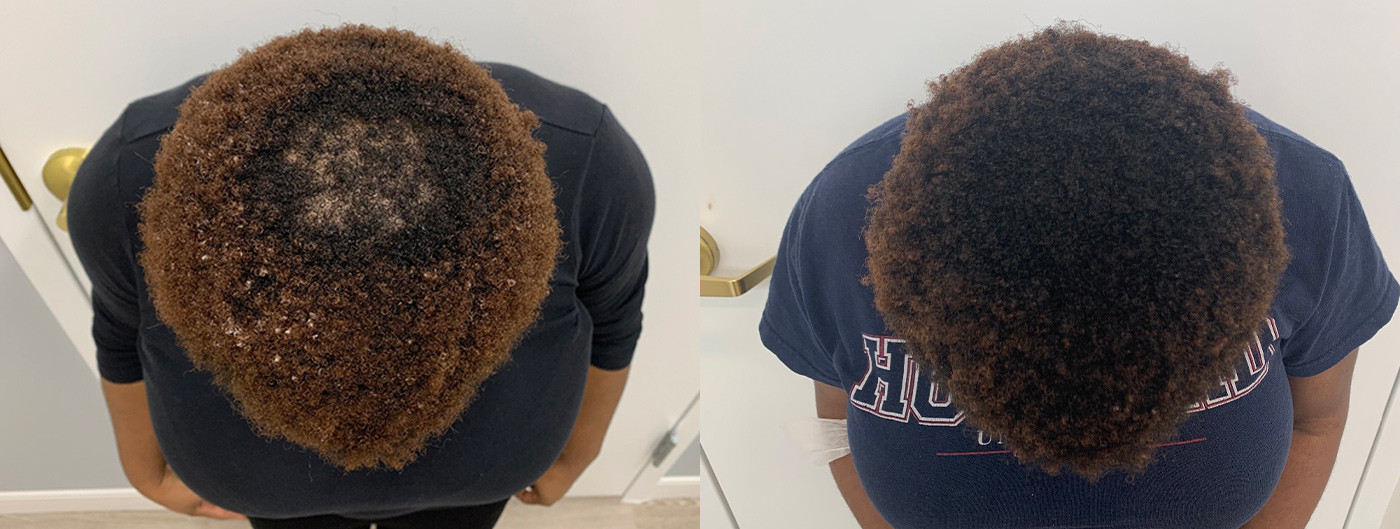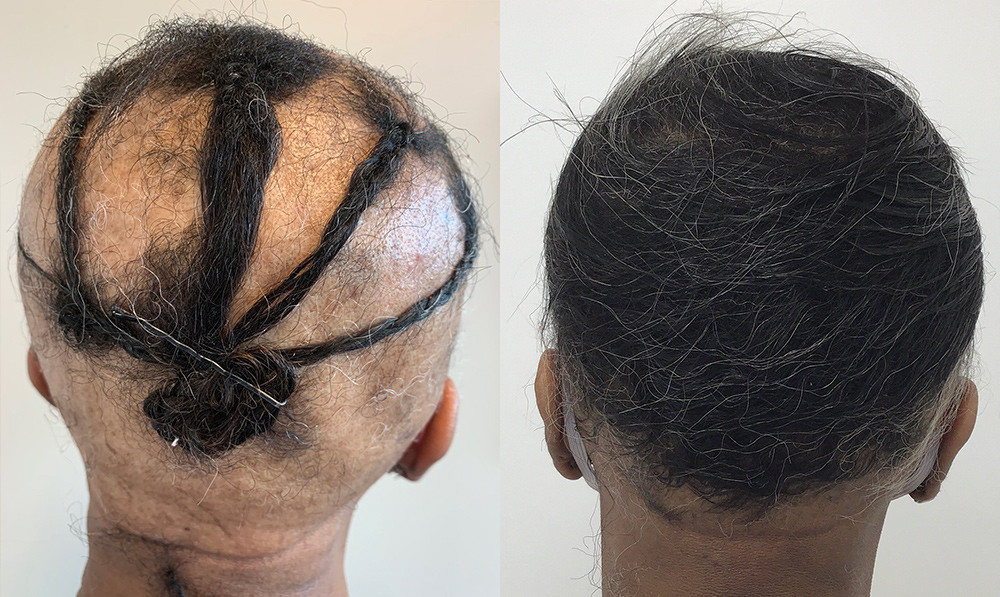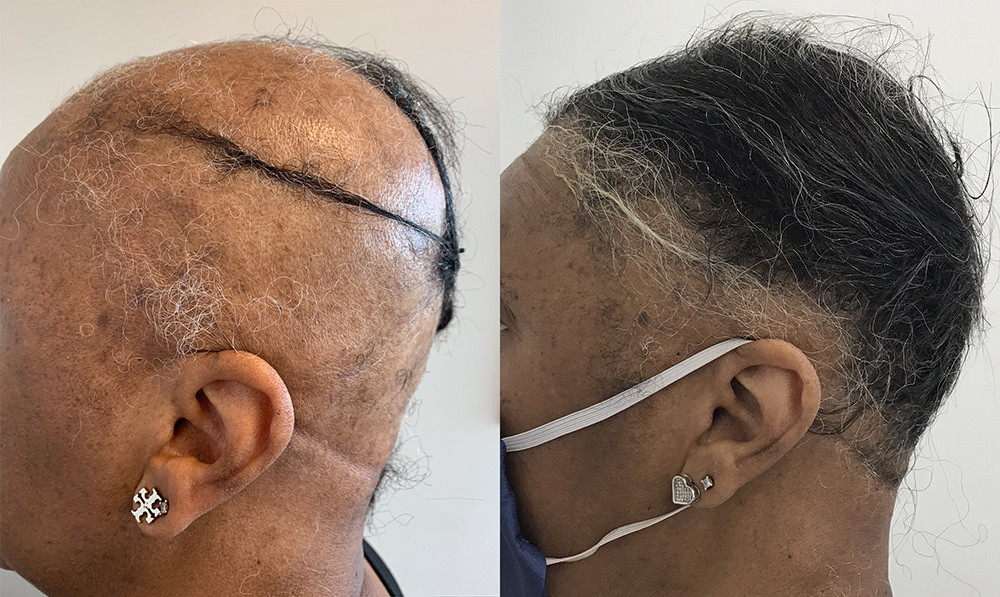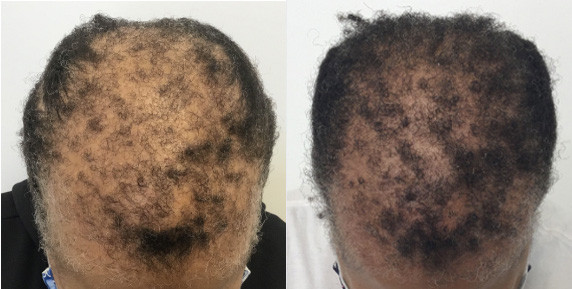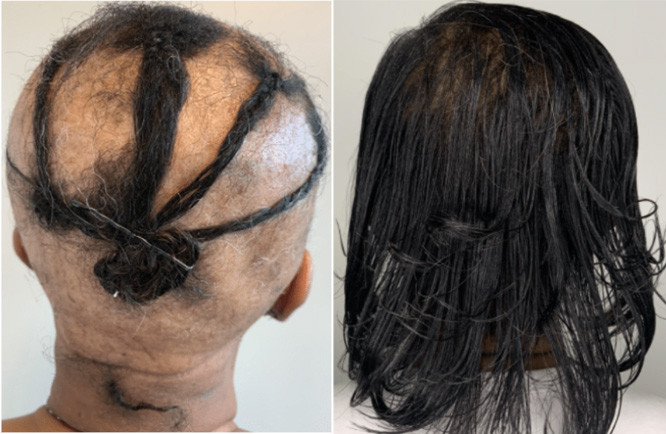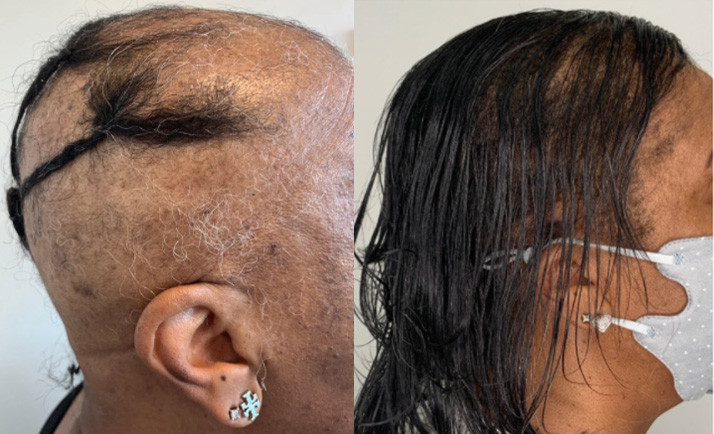When you see clumps of hair in the shower or your hairbrush, it’s easy to feel anxious. But the best thing you can do is call Eternal Dermatology + Aesthetics, your hair loss specialist in Columbia, MD. Delaying treatment only prolongs your fear; instead, you can use that time to jumpstart hair growth using our professional guidance.
What Is a Hair Loss Specialist?
Hair constantly cycles through four different phases, starting with anagen. This marks the time when hair actually grows and can last three to five years. During this phase, hair can grow up to 30 inches (without cutting).
Growth Phases Explained
After the anagen phase, hair enters a period of transition known as catagen. This only lasts around 10 days, during which the hair follicle shrinks and detaches from finger-like projections known as dermal papilla. These provide the follicle with oxygen and other nutrients.
The next phase is telogen and identifies a period of follicle rest. This lasts around three months, and at any given time, 10 to 15% of hair strands are immobile – meaning they’re not shedding or growing. Keep in mind all hairs grow independently of each other. After telogen, a strand enters the exogen phase to be released (shed), and the entire process begins again.
The Shedding Process
On average, a person loses between 50 and 150 hairs per day. Hair loss becomes excessive when you see:
- Gradual thinning on top of the head
- Circular or patchy bald spots
- A sudden loosening of hair when showering or brushing hair
- Scaling patches that spread over the scalp
Real Patient Results
Causes of Hair Loss
Androgenetic alopecia (pattern baldness) is the most common cause of hair loss. It afflicts men and women, although, in the former, it usually begins above the temples and then causes the hairline to recede. In women, pattern baldness begins with gradual thinning at the part line followed by hair loss that radiates from the top.
The driving forces behind androgenetic alopecia include genetics, fluctuating hormones, pregnancy, and menopause. The good news is that because this hair loss is an interruption of the normal hair cycle, it can be reversed. The key is in seeking treatment as early as possible.
Scarring Alopecia
With this condition, scar tissue forms in the skin and destroys hair follicles. One of the most common culprits includes hairstyling chemicals and heat excessively applied to the scalp. When detected at early stages, scarring alopecia can be stopped and even reversed.
Alopecia Areata
This autoimmune disorder is characterized by circular bald patches that sometimes overlap. It starts when the immune system attacks hair follicles and may be the result of severe, long-term stress. Hair can grow back, however, because the follicle remains alive. While alopecia areata can strike males and females at any time, it most commonly starts before age 40.
Traction Alopecia
This hair loss is caused by mechanical damage to the hair follicle as a result of repeated pulling or tension. Culprits include wearing the same hairstyle for long periods of time – including cornrows, tight ponytails, weaves, and braids. The constant pulling causes follicles to become loose, and in addition to hair loss, traction alopecia may cause tenderness, redness, and bumps.
Telogen Effluvium
When the body suffers a shock – such as recovering from surgery, illness, or extreme psychological stress – hair in the telogen phase may shed excessively. This hair loss is temporary and should not be confused with anagen effluvium, in which hair in the anagen phase is shed because of inflammation, toxins, or drugs. Telogen effluvium can occur in males and females at any age in Columbia, MD, including those who are otherwise healthy.
Trichotillomania
Also known as hair-pulling disorder, this condition is classified under obsessive-compulsive and related disorders. It involves repeated, irresistible urges to yank hair from various parts of the body, including eyelids, eyebrows, and the scalp. Although not well understood, this condition does respond positively to treatment.
Treatment Options
Fortunately, hair loss can be corrected with a number of different treatments, including:
- Scalp ointments and solutions
- Oral medications
- Scalp injections
Platelet-Rich Plasma (PRP)
Yet another option is the use of platelet-rich plasma (PRP), an innovative treatment that relies on the body’s own regenerative abilities. Let’s start at the beginning: platelets are one of the blood’s four most critical components. They promote cell regeneration and growth to heal tissues from within.
Treatment starts with a simple blood draw; we then place that sample into a centrifuge to separate the platelets and obtain a concentration that is five times greater than mere blood. This concentration is key because platelets also secrete growth factors that, when injected into the scalp, target hair follicles to promote growth.
Laser and Light Therapy
Laser therapy can increase blood flow in the scalp and stimulate growth in strands stuck in the catagen or telogen phases. This results in higher levels of anagen hair, and with time, you see longer, thicker tresses that once more grow in a predictable pattern.
Blood flow is necessary to provide oxygen and other nutrients to hair roots (as mentioned earlier). It additionally prevents the build-up of DHT – a hormone that promotes hair loss. This treatment therefore works on multiple levels to kick the growing process into gear.
Hair Transplantation
This procedure involves removing small hair grafts from a donor area and relocating it to the scalp. The grafts differ in size and shape and contain different numbers of hair strands to cover thinning patches as necessary. Each is placed about one-eighth of an inch apart to maintain healthy scalp circulation, and we additionally ensure transplanted hair grows in a natural direction.
Your Columbia, MD, Hair Loss Solution
The sight of balding or thinning patches can be alarming, but as your experienced hair loss specialist, we’re here to help. We uncover the cause and then proceed with a treatment option that suits your needs. And the sooner you choose to fight against hair loss, the sooner you’ll see results. Dr. Rodney has extensive experience in all aspects of cosmetic, surgical, and medical dermatology for all skin types. The entire team at Eternal Dermatology is committed to providing the very best experience possible in a patient-friendly and professional environment. Visit this dermatologist in Baltimore and DMV area today. Schedule your consultation today!



